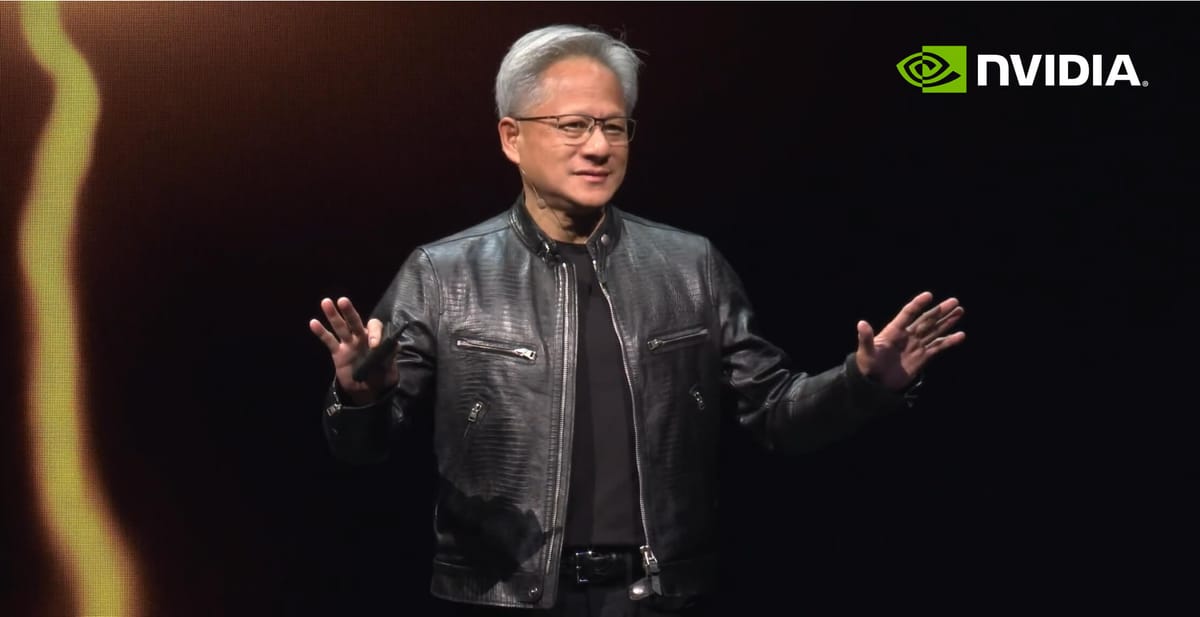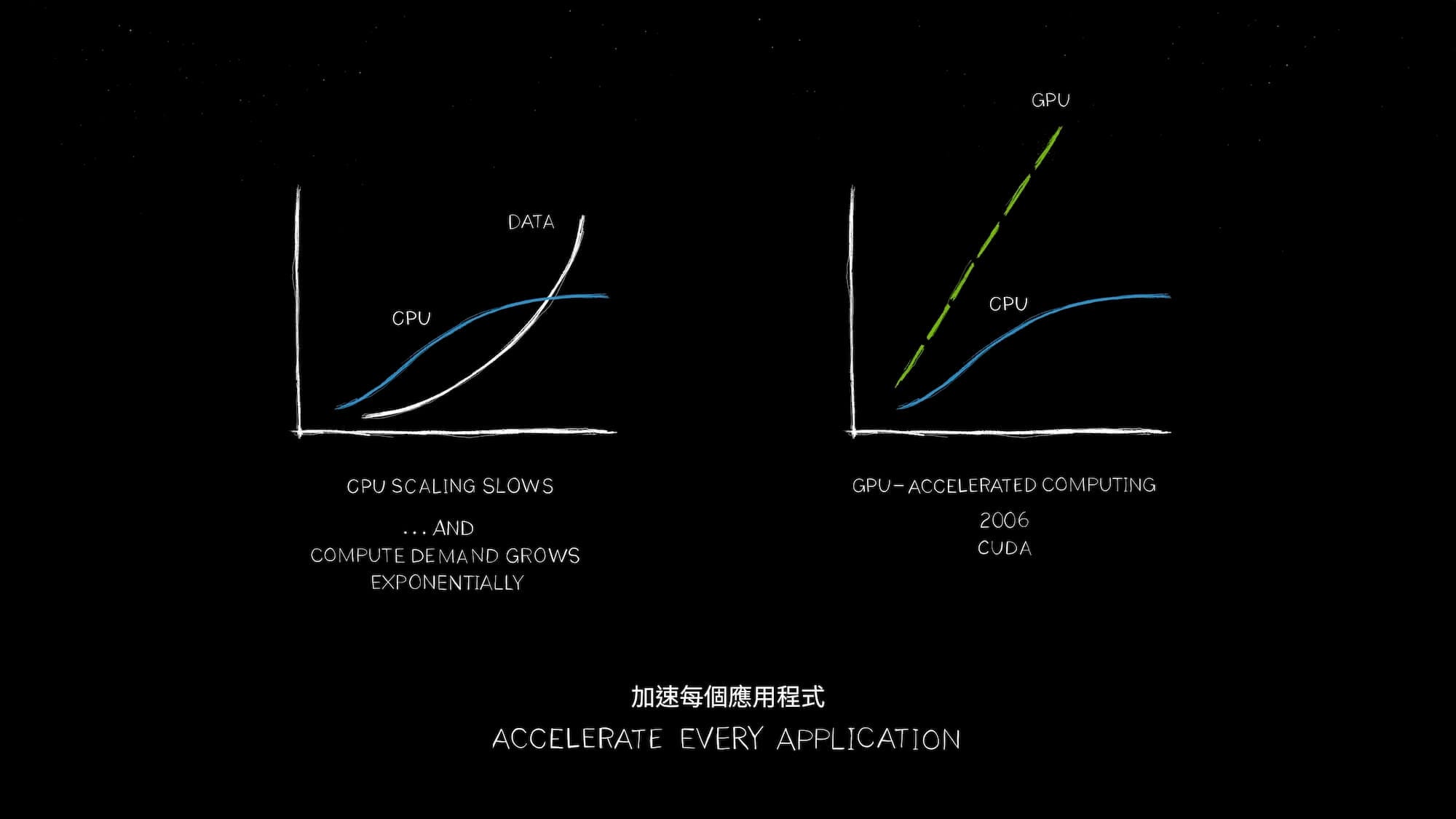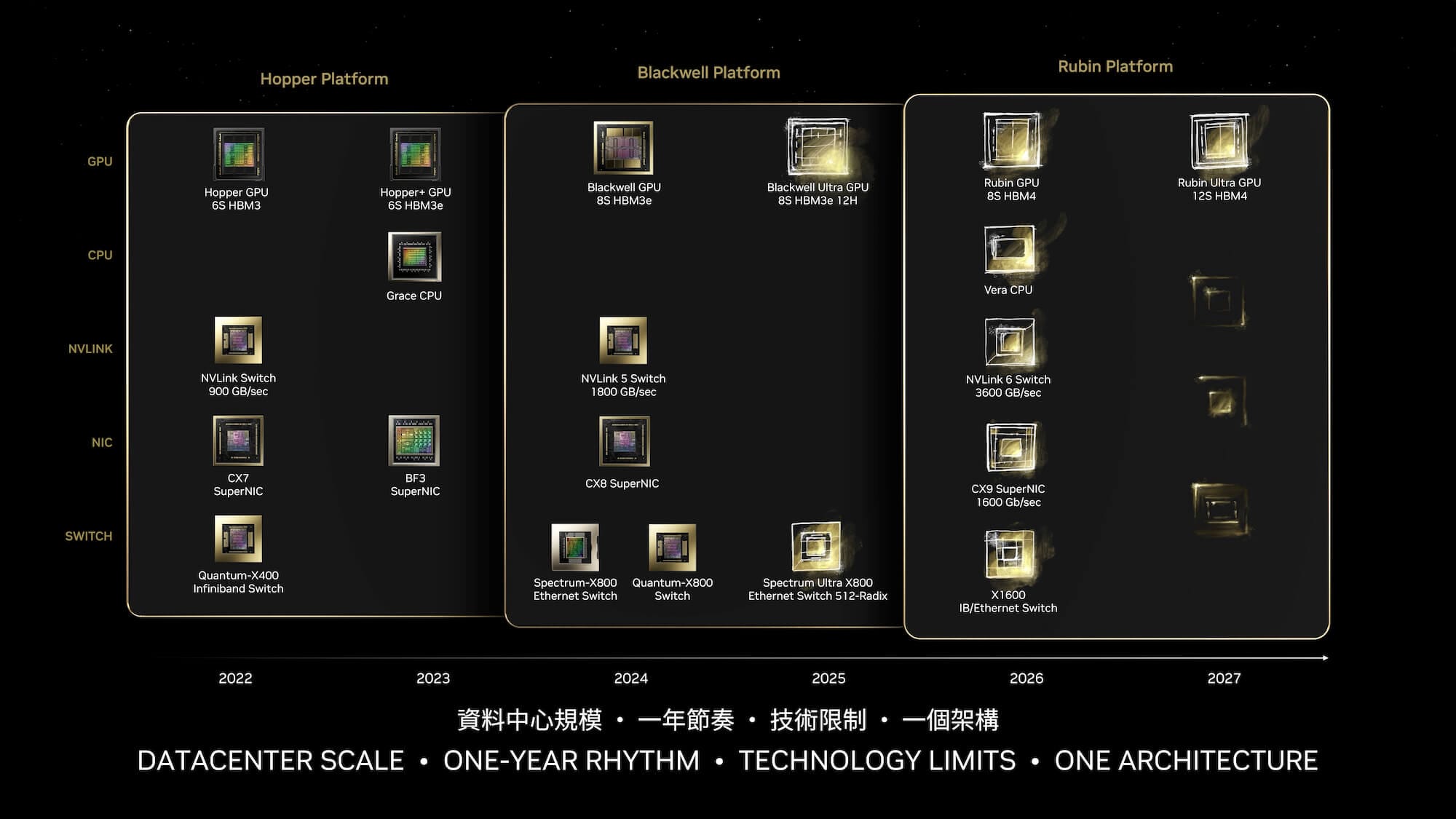
In a captivating nighttime keynote ahead of Computex 2024, NVIDIA CEO Jensen Huang revealed the company's vision for the future of accelerated computing and generative AI. The spotlight shone on NVIDIA's GPU roadmap, with the announcement of the Rubin architecture set to succeed Blackwell in 2026.
You can watch our 20-minute supercut of the event below.
Huang kicked off the keynote by highlighting the transformative impact of accelerated computing on various industries. He pointed out that the performance scaling of central processing units (CPUs) has slowed, while the demand for computation continues to grow exponentially. Huang asserted that accelerated computing, through the use of specialized processors like GPUs, offers a solution to this "computation inflation." He then showed how NVIDIA's technology can provide a 100x speedup while only increasing power consumption by a factor of three, resulting in significant cost and energy savings.

He pointed to the widespread adoption of CUDA, their parallel computing platform and programming model, as to the main reason for their success. With 5 million developers and an extensive ecosystem of partners, CUDA has indeed achieved a "virtuous cycle," driving further demand which has enabled the company to improve performance and reduce costs.
Huang revealed an aggressive one-year upgrade cycle for its AI acceleration platforms, pushing both the technology and its partners to their limits. "Our basic philosophy is very simple: build the entire data center scale, disaggregate and sell to you parts on a one-year rhythm, and push everything to technology limits," he explained. Despite this claim, NVIDIA's releases only bolster its full-stack offering and further lock customers into its ecosystem.
Following the launch of Blackwell GPUs later this year and Blackwell Ultra in 2025, Rubin will make its debut in 2026 with support for 8-Hi HBM4 memory stacks. Rubin Ultra will follow in 2027, leveraging 12-Hi HBM4 for ultimate bandwidth.

Huang also unveiled the powerful new Vera CPU, destined to replace current Grace Hopper offerings on a new Vera Rubin accelerator board alongside Rubin GPUs. Details on Vera's enhancements remain scarce, but it's expected to deliver optimizations to the Arm CPU cores and overall configuration.
The Rubin platform boasts impressive capabilities, including NVLink 6 Switch performance up to 3,600 GB/s and the CX9 SuperNIC providing up to 1,600 GB/s.
Overall, Huang's keynote showcased NVIDIA's holistic approach to accelerated computing and AI. He highlighted the energy efficiency and cost savings of GPU acceleration, the transformative potential of generative AI, and the company's efforts to make these technologies accessible to developers and enterprises through platforms like NVIDIA NIM.
They also announced the genral availability of their ACE NIM, which enables the creation of digital humans for various applications, including customer service and interior design.
Wrapping up, Huang emphasized the company's focus on physical AI and robotics, and advancements in simulation with Omniverse. He highlighted partnerships with industry leaders, including Foxconn, in developing robotic factories and AI-powered robots as well as Mercedes and JRL with autonomous vehicles.
In his signature leather jacket, Huang delivered an inspiring vision of the future, even if many of the individual announcements were retreads from March's GTC keynote. That repetition speaks to the coherence and focused ambition of NVIDIA's strategy.
As Huang said, "AI is the most powerful technology force of our time." With its relentless pace of innovation and ecosystem of partners, NVIDIA seems determined to ride that force to reshape the future of computing. This Computex keynote was yet another indicator that they have the vision and the technological prowess to do just that.

